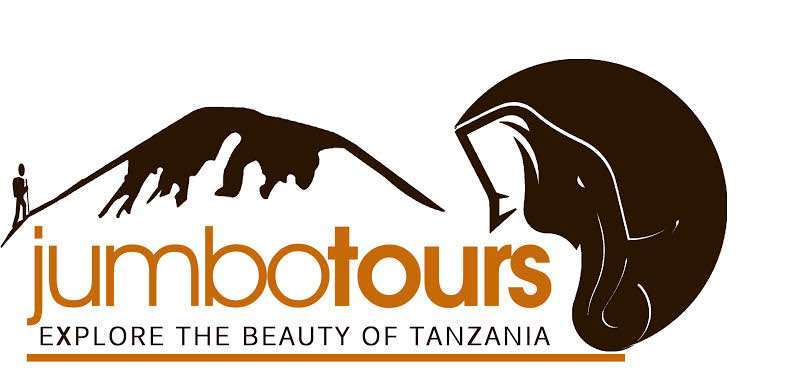Study Tour to Mount Kilimanjaro
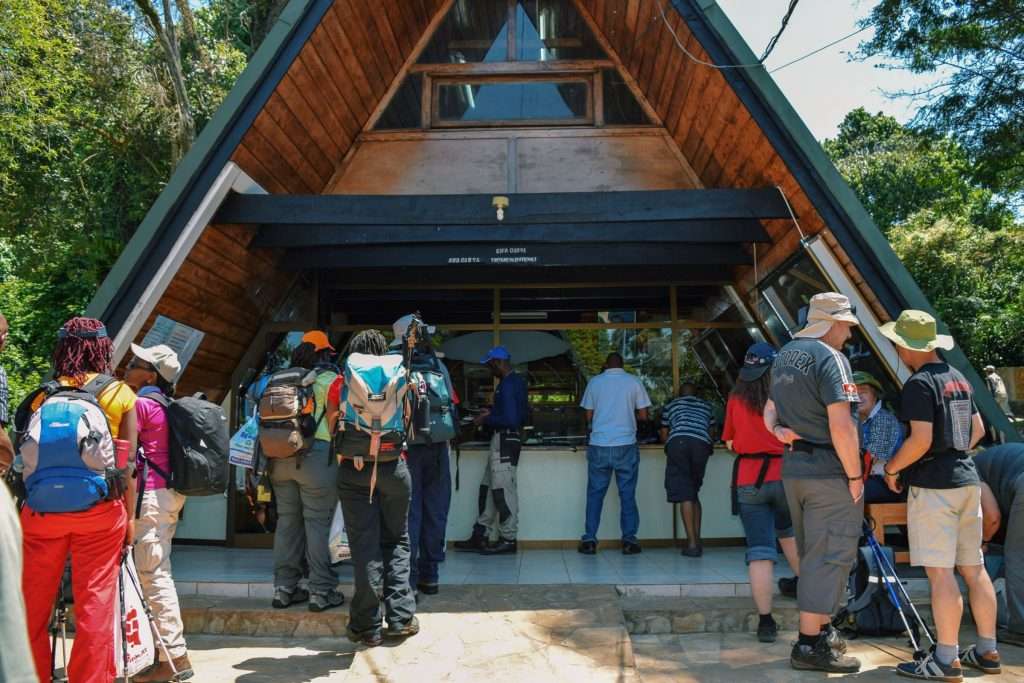

While trekking the Marangu route, students will not only experience the awe-inspiring natural beauty of Kilimanjaro but will also gain valuable insights into various aspects of the region. The journey serves as an outdoor classroom, offering lessons in geology, ecology, and environmental science. As participants ascend, they will observe changes in vegetation zones, from the dense rainforests at lower altitudes to the alpine desert and glaciers at higher elevations.
Moreover, the route provides a unique cultural experience, allowing students to interact with the local Chaga people. Guides often share stories about the indigenous flora and fauna, traditional practices, and the significance of Kilimanjaro in local folklore. This cultural exchange fosters a broader understanding of the interconnectedness between the mountain and the communities that surround it.
Given the geological history of Kilimanjaro, students will learn about the formation of the mountain and its distinct volcanic features. Guides may delve into topics such as tectonic plate movements and the forces that shaped this iconic peak.
The challenges of altitude and the effects on the human body become tangible lessons as participants ascend the mountain. Students will learn about the importance of acclimatization, recognizing symptoms of altitude sickness, and the role of proper hydration and nutrition in high-altitude environments.
In addition to the physical and environmental lessons, the Marangu route offers a lesson in perseverance and teamwork. Climbing Kilimanjaro is a challenging endeavor that requires determination and collaboration. Students will develop resilience and a sense of accomplishment as they navigate the varying terrains and overcome obstacles on their way to Uhuru Peak
Overall, the Marangu route provides an enriching educational experience, combining the wonders of nature with insights into geology, ecology, culture, and personal growth.
Summary of the 8-Day Mount Kilimanjaro Climb via Marangu Route
Day 1: Arrival Day
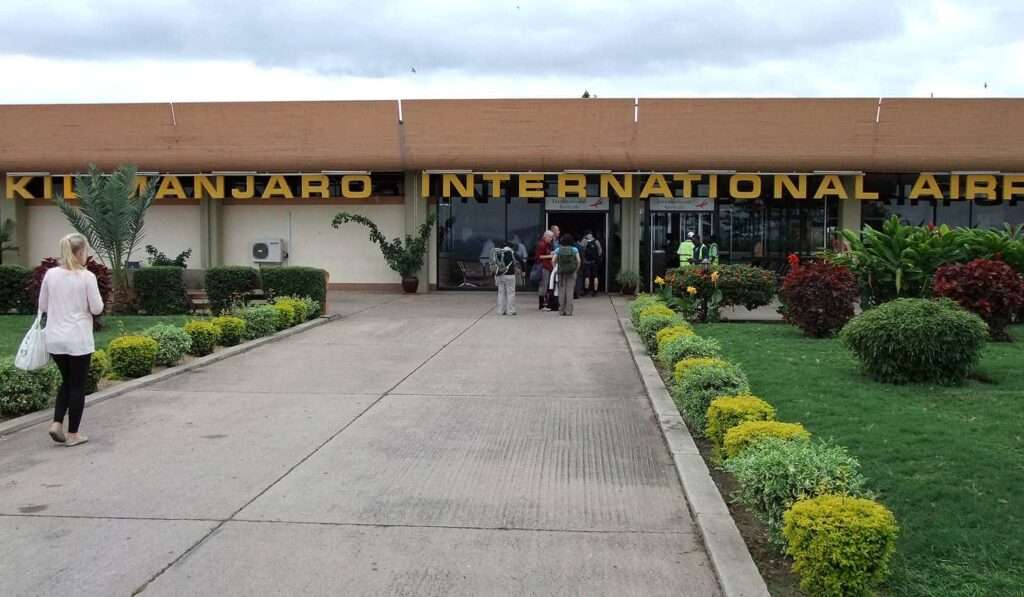
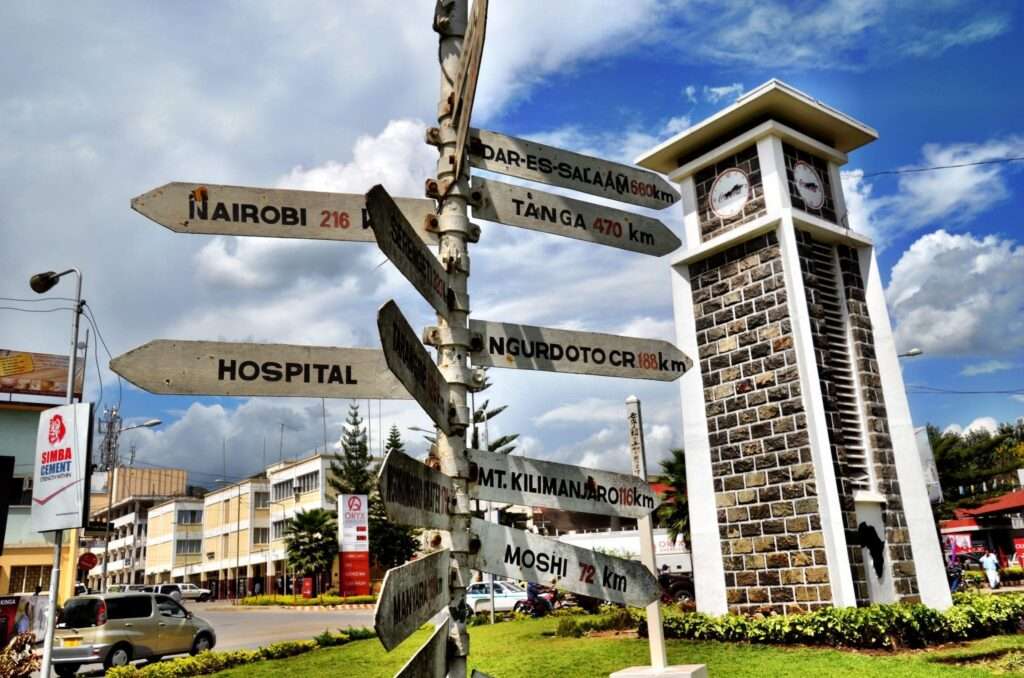
Arrival at Kilimanjaro International Airport. After
arrival, there is a pre-arranged transfer to the town of Arusha, which serves
as one of the common bases for Kilimanjaro treks. Upon reaching Arusha,
students receive a warm welcome from the trekking company and guides. An
initial briefing may take place to provide essential information about the
upcoming trek, including itinerary details, safety procedures, and equipment
checks.
This could be a hotel or a lodge, depending on the trekking
package. Given the potential effects of jet lag and the need for physical
preparation, the rest of the day is often designated for rest and relaxation.
Students will have free time to explore Arusha, rest at the accommodation, or
take part in optional activities. Depending on the trekking company’s policies,
there will be an equipment check to ensure that participants have all the
necessary gear for the trek. Any missing or inadequate equipment can be
addressed in Arusha before the trek officially begins.
Some students may choose to explore Arusha further or
participate in optional pre-trek activities, such as cultural tours or visits
to nearby attractions. In the evening, students will come together for a group
dinner. This provides an opportunity for participants to get to know each
other, ask last-minute questions, and foster a sense of camaraderie. As
trekking often begins early in the morning on Day 2, students are encouraged to
get a good night’s sleep to ensure they are well-rested for the start of the
trek. Day 1 serves as an orientation day, allowing students to acclimate to the
new environment, gather information, and prepare for the adventure ahead.
Students can expect the air in Arusha to be infused with excitement and anticipation, as the vibrant local culture and the looming presence of Mount Kilimanjaro set the stage for the adventure ahead. The evening group dinner not only provides a chance for logistical discussions but also marks the beginning of the trekkers’ collective journey, fostering a shared sense of determination and camaraderie that will accompany them throughout the expedition.
Day 2: Marangu Gate to Mandara Hut
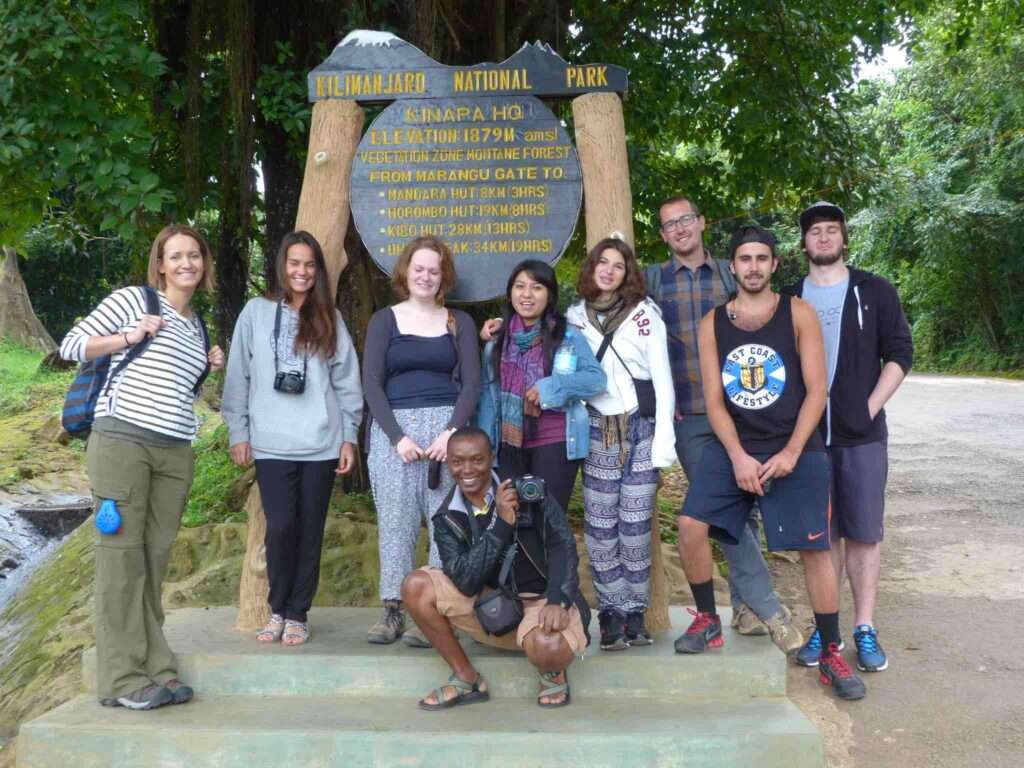
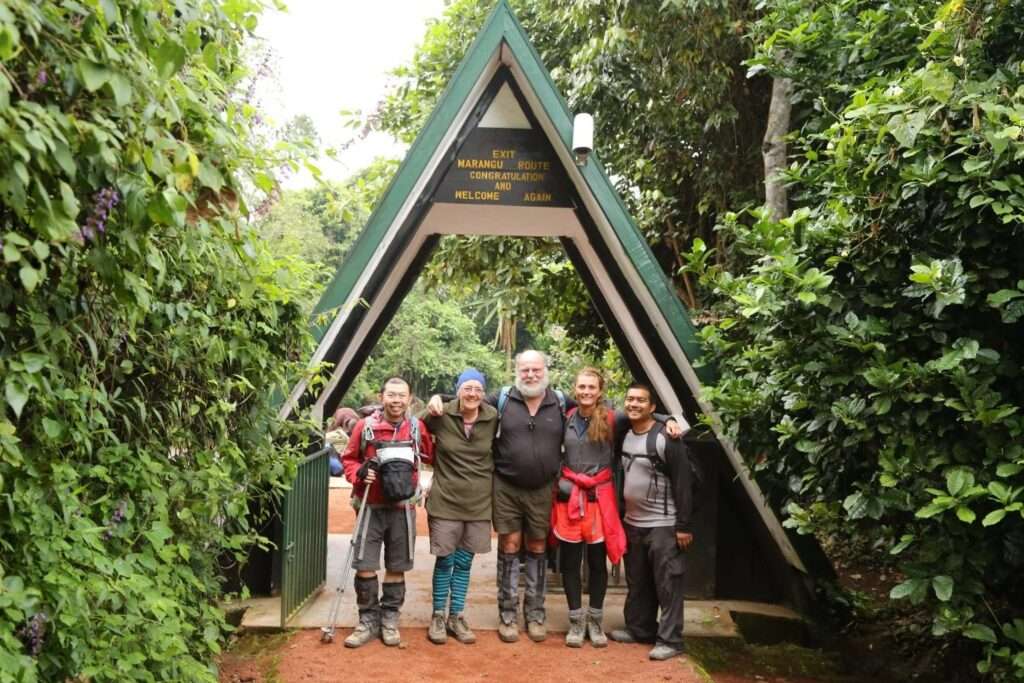

Elevation: 6,046 ft to 8,858 ft
Hiking Time: 4-5 hours
Distance: 8 km | 5 miles
Habitat: Rain Forest
On the first day of the trek from Marangu Gate to Mandara Hut, students embark on an educational adventure that encompasses various disciplines, providing them with a rich understanding of the environment and culture. The journey begins with a departure from Arusha or Moshi, heading towards the Marangu Gate where necessary formalities are completed before embarking on the trek.
The initial leg of the hiking trail unfolds through a captivating tropical rainforest, providing a lush and vibrant backdrop. As students ascend, the forest gradually reveals its inhabitants, including the opportunity to observe the playful antics of blue monkeys at the upper edge of the forest line. Continuing the ascent, the trail expands, unveiling breathtaking hillsides that showcase the diverse beauty of the surroundings. This part of the trek offers a visual feast, with panoramic views that inspire awe. The culmination of this day’s journey is the arrival at Mandara Hut, a welcoming resting place nestled within this rich rainforest habitat. The hut provides a comfortable haven, allowing trekkers to recharge and absorb the serenity of the natural surroundings.
Throughout the day, students engage in a hands-on exploration of tropical rainforest ecology, learning about the intricate relationships within this ecosystem. Guides share insights into the importance of rainforests in maintaining global biodiversity and the delicate balance of the ecosystem. The observation of blue monkeys provides a unique opportunity for students to learn about primate behavior and the adaptation of wildlife to specific habitats.
As the trail ascends, students experience changes in altitude and witness corresponding shifts in vegetation. This offers a practical lesson in the correlation between altitude and habitat. Discussions on the geological aspects of the region, such as the formation of Kilimanjaro and its volcanic history, can be woven into the educational narrative. Culturally, guides share stories and traditions of the Chaga people, providing students with a glimpse into the symbiotic relationship between the local communities and their natural surroundings. Learning about traditional uses of plants and trees in the rainforest fosters an appreciation for indigenous knowledge and sustainable practices.
The physical aspect of the hike introduces students to the challenges of high-altitude trekking and the importance of teamwork and perseverance. Discussions on personal and group strategies for adapting to changes in elevation contribute to lessons in resilience and cooperation. As students arrive at Mandara Hut, they find not only a place to rest but also a space to reflect on the day’s discoveries, fostering a holistic and immersive learning experience in the heart of Kilimanjaro’s diverse landscapes.
Day 3: Mandara Hut to Horombo Hut
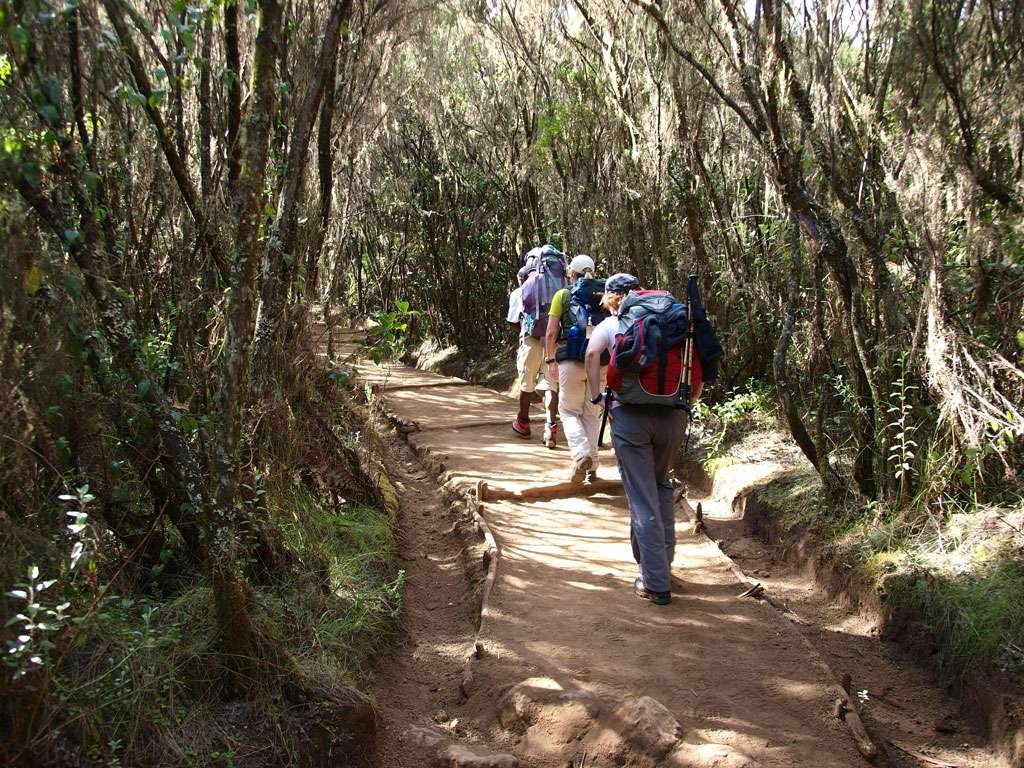

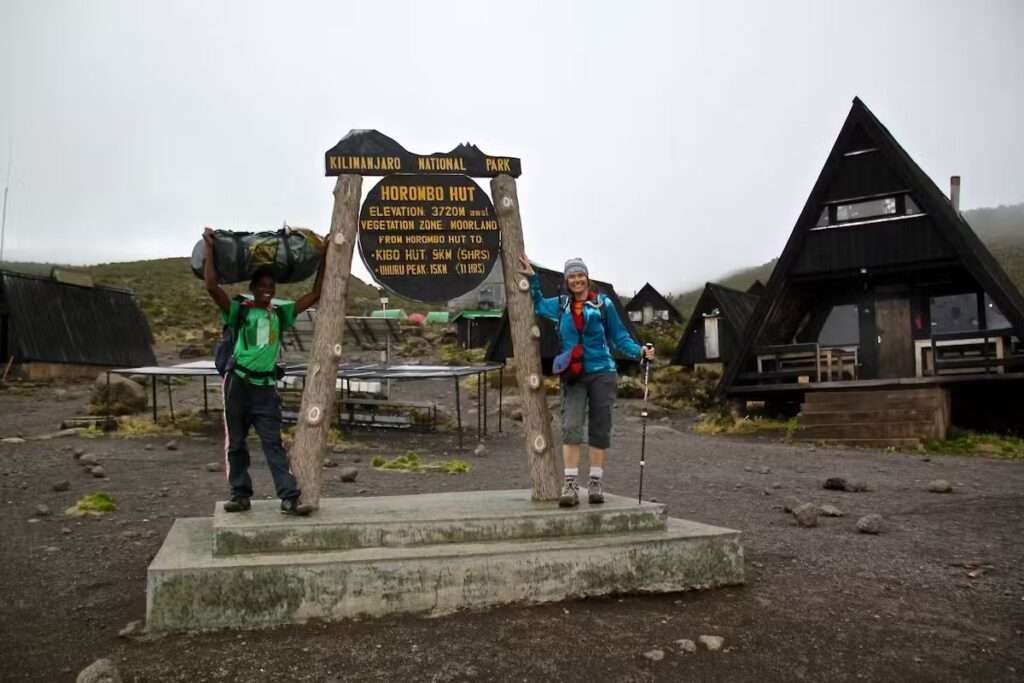

Elevation: 8,858 ft to 12,205 ft
Hiking Time: 6-8 hours
Distance: 12 km | 7 miles
Habitat: Moorland
On the second day of the trek from Mandara Hut to Horombo Hut, the journey unfolds with a continuation through the enchanting forest. As students ascend, the trail gradually opens into high moorland, marking a distinct transition in the landscape. This phase of the trek provides an immersive experience in the unique habitat of the moorland. Throughout this leg of the journey, students may catch their first glimpses of Kibo and Mawenzi peaks, two of the three volcanic peaks that collectively form the majestic summit of Kilimanjaro. The expansive moorland offers a striking contrast to the lush rainforest encountered on the previous day, introducing students to the diverse ecosystems that characterize the ascent.
The hiking time for the day spans 6-8 hours, offering ample opportunities for observation and reflection. As students traverse the moorland, guides may share insights into the geological formations and volcanic history that have shaped Kilimanjaro. The varying elevations and habitats encountered on this day contribute to a deeper understanding of the mountain’s complexity. The journey not only provides a physical challenge but also serves as an educational exploration of altitude-related changes, climate variations, and the unique flora and fauna that thrive in the moorland habitat. As students’ approach Horombo Hut, situated at an elevation of 12,205 ft, they are met with a sense of accomplishment and a panoramic view of the surrounding landscapes, setting the stage for further discoveries in the days to come.
The transition from forest to moorland introduces students to the unique characteristics of this high-altitude habitat. Guides can elaborate on the specialized plant life adapted to the moorland environment, emphasizing how flora and fauna have evolved to thrive in these challenging conditions. As the trail ascends, students are treated to their first views of Kibo and Mawenzi peaks. Guides provide geological insights into the formation of these volcanic peaks, explaining their significance in shaping Kilimanjaro’s iconic summit. Discussions may touch on the volcanic activity that has shaped the landscape over millennia.
The increasing elevation becomes a tangible lesson in altitude-related challenges. Students learn about the effects of higher altitudes on the human body, including the importance of acclimatization and the gradual adjustment to reduced oxygen levels. Guides may share strategies for minimizing the impact of altitude, emphasizing the need for a measured pace. The shift from the rainforest to moorland introduces students to the diverse climates Kilimanjaro encompasses. Discussions may cover how altitude influences temperature, precipitation, and vegetation, providing a comprehensive understanding of the mountain’s microclimates.
With a hiking time of 6-8 hours, students have ample opportunities for observation and reflection. Guides encourage students to engage with their surroundings, fostering a deeper connection to the natural environment. The contrasting landscapes of the moorland offer a visual representation of Kilimanjaro’s ecological diversity. Personal and Group Dynamics: The longer hiking duration also promotes teamwork and resilience. Students learn about their own physical capabilities and the importance of mutual support within the group. Guides may facilitate discussions on effective communication, pacing, and the role of teamwork in achieving shared goals.
As students approach Horombo Hut, situated at an elevation of 12,205 ft, they not only experience a sense of accomplishment but also gain a deeper appreciation for the intricacies of Kilimanjaro’s ecosystems and the challenges inherent in high-altitude trekking. This day lays the foundation for further exploration and learning as the trek progresses.
Day 4: Horombo Hut to Mawenzi Ridge to Horombo Hut - Acclimatization Day
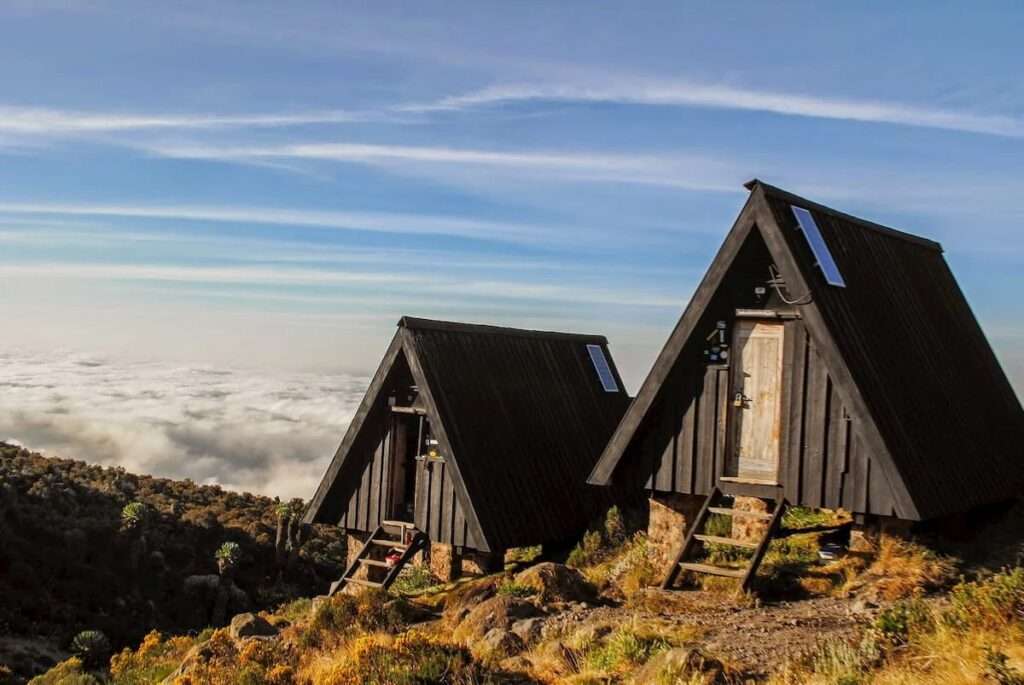
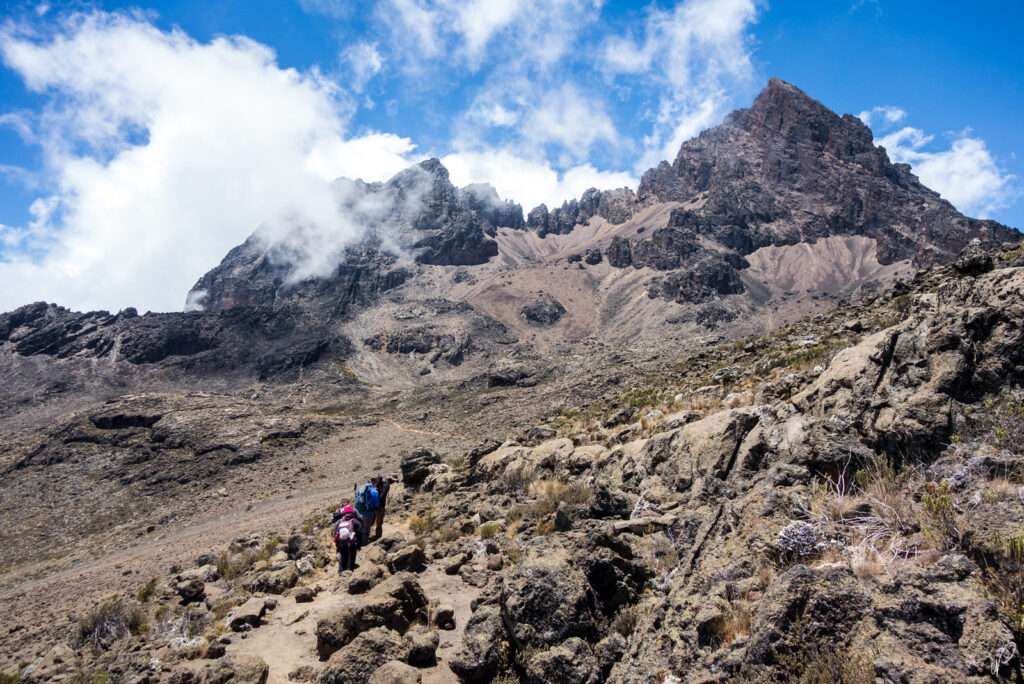
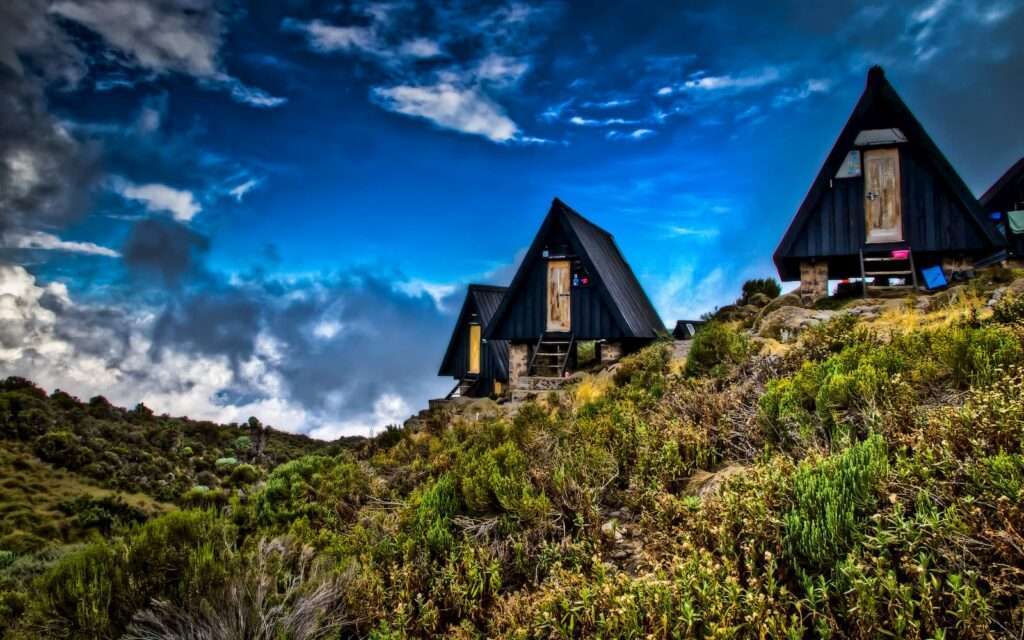
Horombo Hut to Mawenzi Ridge
Elevation: 12,205 ft to 14,400 ft
Hiking Time: 2-3 hours
Distance: 5 km | 3 miles
Habitat: Heath
Mawenzi Ridge to Horombo Hut
Elevation: 14,400 ft to 12,205 ft
Hiking Time: 1-2 hours
Distance: 5 km | 3 miles
Habitat: Health
During the acclimatization day from Horombo Hut to Mawenzi Ridge, students will engage in a more focused exploration of Kilimanjaro’s unique features, deepening their understanding of the mountain’s ecology and the challenges of high-altitude trekking. This extra day allows students to acclimatize to the higher elevations gradually. Guides can provide insights into the physiological adaptations the body undergoes at higher altitudes, discussing the importance of this process for a successful summit attempt.
As the trail leads through the heath habitat, students will learn about the specific plant life adapted to this environment. Discussions may cover the resilience of heath plants to harsh conditions, emphasizing the role of adaptation in diverse ecosystems. The hike to Mawenzi Ridge provides students with breathtaking panoramic views of Kibo and Mawenzi peaks. Guides may share geological insights into the formation of these peaks, connecting the visible features to the broader geological history of Kilimanjaro.
While exploring Mawenzi Ridge, students can gain a heightened awareness of the fragility of high-altitude environments and the importance of responsible trekking practices. Guides may discuss Leave No Trace principles, emphasizing the need to minimize the environmental impact of human activities on the mountain.
Guides may also take this opportunity to share cultural stories and traditions related to Mawenzi, adding a cultural layer to the educational experience. Understanding the cultural significance of the landscape can foster a deeper appreciation for the interconnectedness of nature and local communities. The acclimatization day provides students with a chance for self-reflection and group bonding. Discussions on individual experiences, challenges, and personal growth contribute to the overall learning experience. The importance of mutual support within the group becomes particularly evident during this phase of the trek.
As students head back to Horombo Hut, they not only carry the physical benefits of acclimatization but also a wealth of knowledge about Kilimanjaro’s diverse habitats, the geological forces shaping its peaks, and the cultural narratives that add depth to the trekking experience. This day serves as a pivotal moment for reflection and preparation for the subsequent stages of the climb.
Day 5: Horombo Hut to Kibo Hut
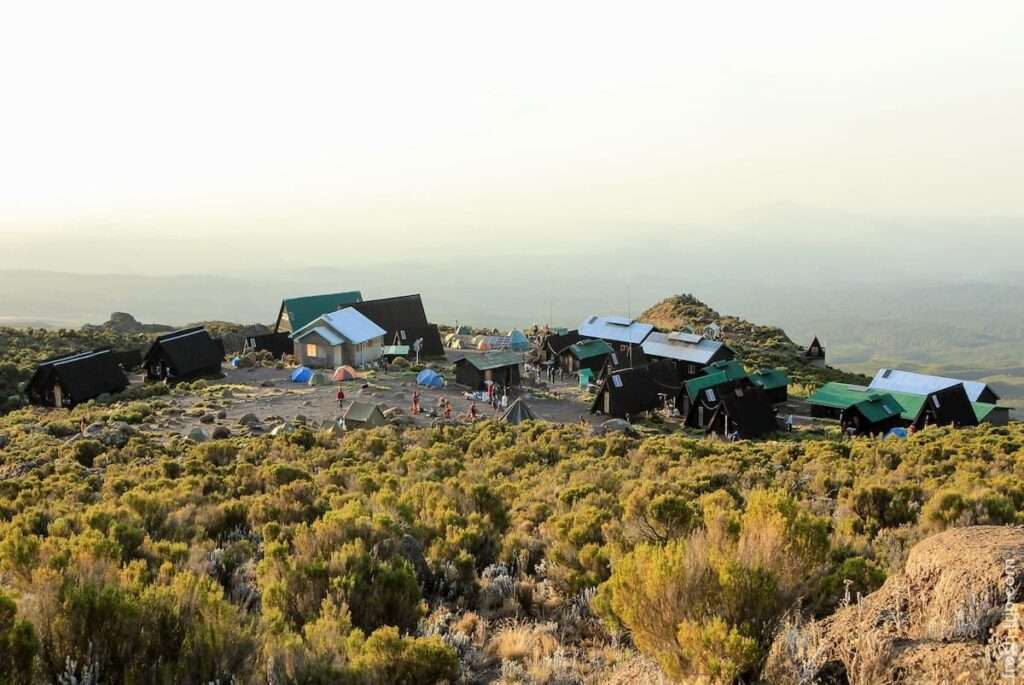
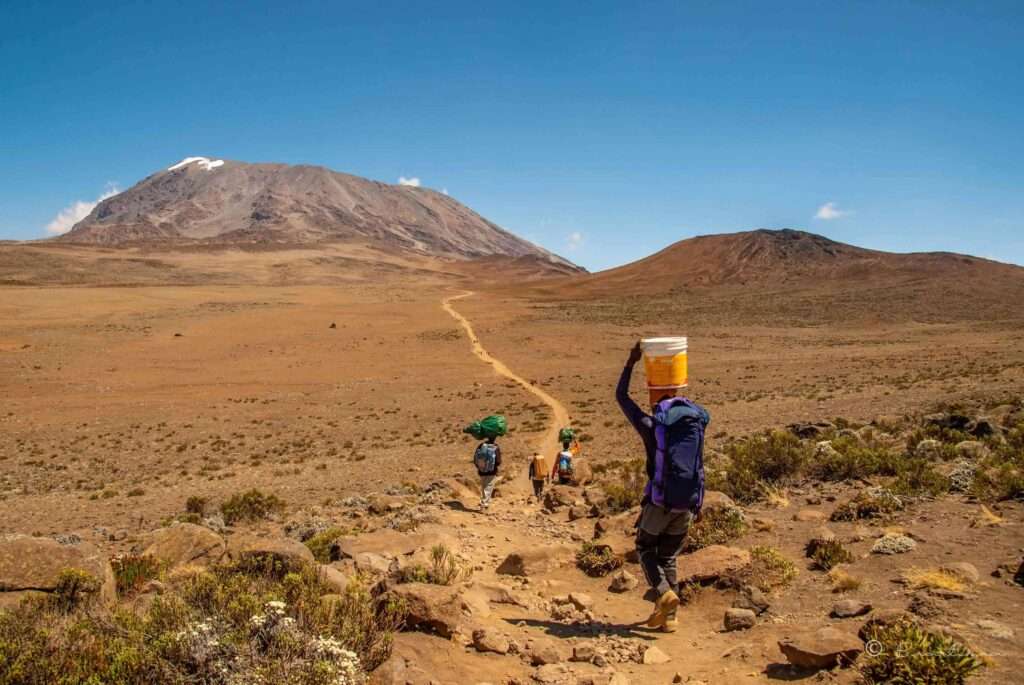
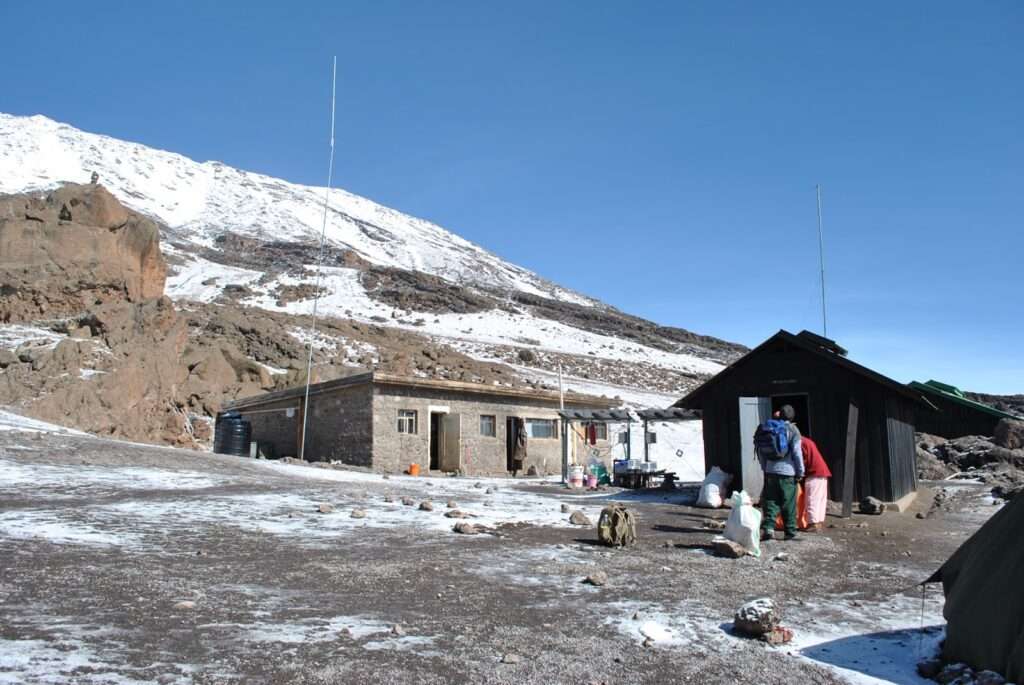
Elevation: 12,205 ft to 15,430 ft
Hiking Time: 6-8 hours
Distance: 10 km | 6 miles
Habitat: Alpine Desert
Throughout the fourth day of the trek from Horombo Hut to Kibo Hut, students embark on an educational journey that encompasses various aspects of high-altitude mountaineering and the unique characteristics of Kilimanjaro’s Alpine Desert. As students ascend from Horombo Hut to Kibo Hut, they experience the physical challenges associated with higher elevations. Guides may lead discussions on the physiological effects of reduced oxygen levels, emphasizing the need for acclimatization and proper pacing.
The trek through the Alpine Desert provides an opportunity for guides to delve into the geological forces that shaped the lunar landscape of the “Saddle” between Mawenzi and Kibo. Students learn about the volcanic history of Kilimanjaro and the unique features that define the Alpine Desert. In the harsh environment of the Alpine Desert, students can observe the unique adaptations of plants and possibly discuss the scarcity of wildlife at such high altitudes. These discussions shed light on the resilience of life in extreme conditions and the strategies organisms employ to survive.
Guides may take the opportunity to discuss the principles of sustainable trekking and the importance of minimizing environmental impact in delicate ecosystems. The Alpine Desert’s fragile environment underscores the need for responsible practices to preserve these high-altitude regions. Arriving at Kibo Hut marks a crucial phase in preparation for the summit day. Students learn about the importance of early dinner, rest, and hydration in optimizing physical readiness for the challenging ascent to Uhuru Peak. Guides may share insights into the strategic planning involved in summit attempts.
The journey through different habitats and landmarks often provides guides with opportunities to share cultural stories and traditions associated with Kilimanjaro. These narratives contribute to a holistic understanding of the mountain’s significance in local culture. As the team reaches Kibo Hut, discussions may revolve around individual and group dynamics. Students reflect on their personal experiences, challenges, and successes, fostering a sense of camaraderie within the group. These reflections contribute to the overall educational and personal growth aspects of the trek.
The Alpine Desert stage of the trek serves as a dynamic classroom, offering lessons in altitude physiology, geology, ecology, sustainability, and teamwork. It sets the stage for the climactic summit day, providing students with the knowledge and skills needed to navigate the challenges ahead while fostering a deep appreciation for the diverse and fragile environments of Kilimanjaro.
Day 6: Kibo Hut to Uhuru Peak to Horombo Hut
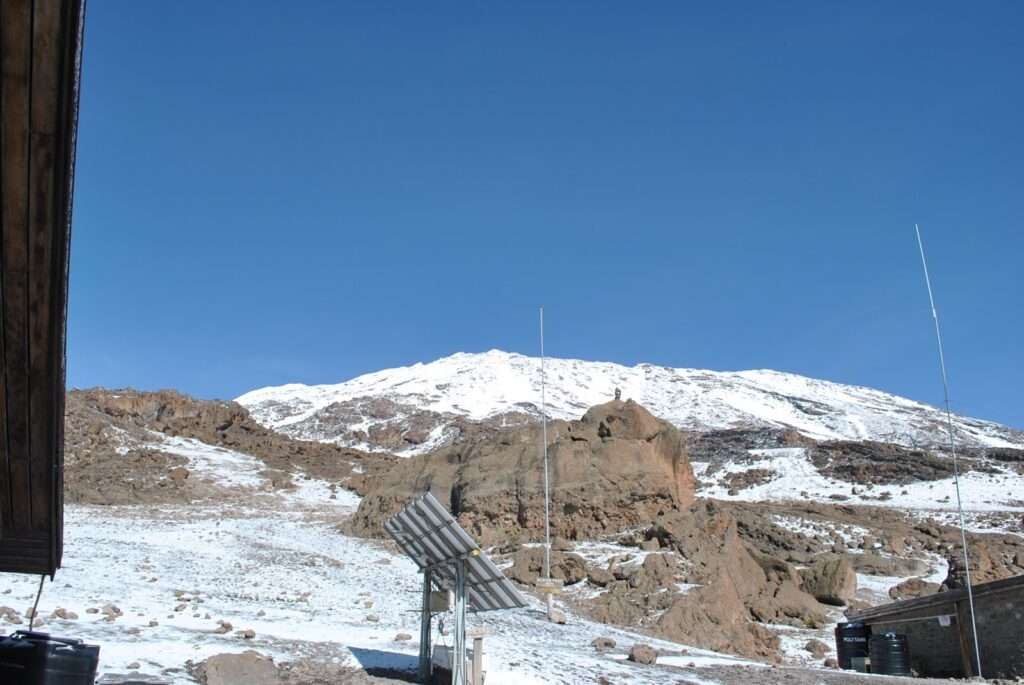
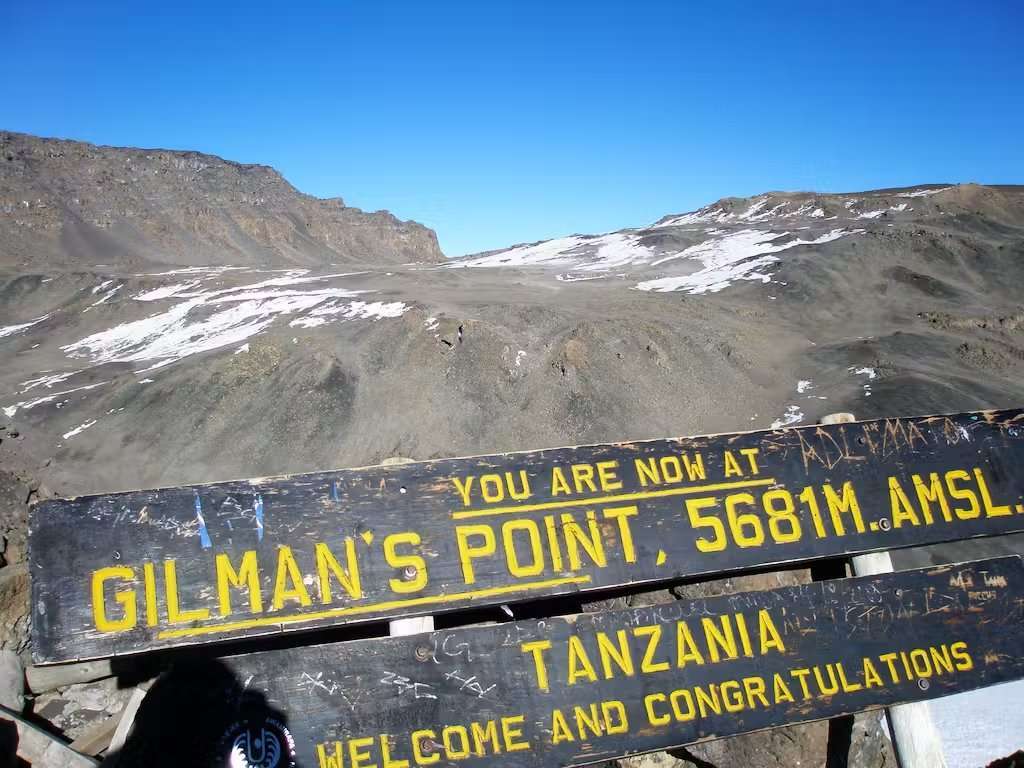
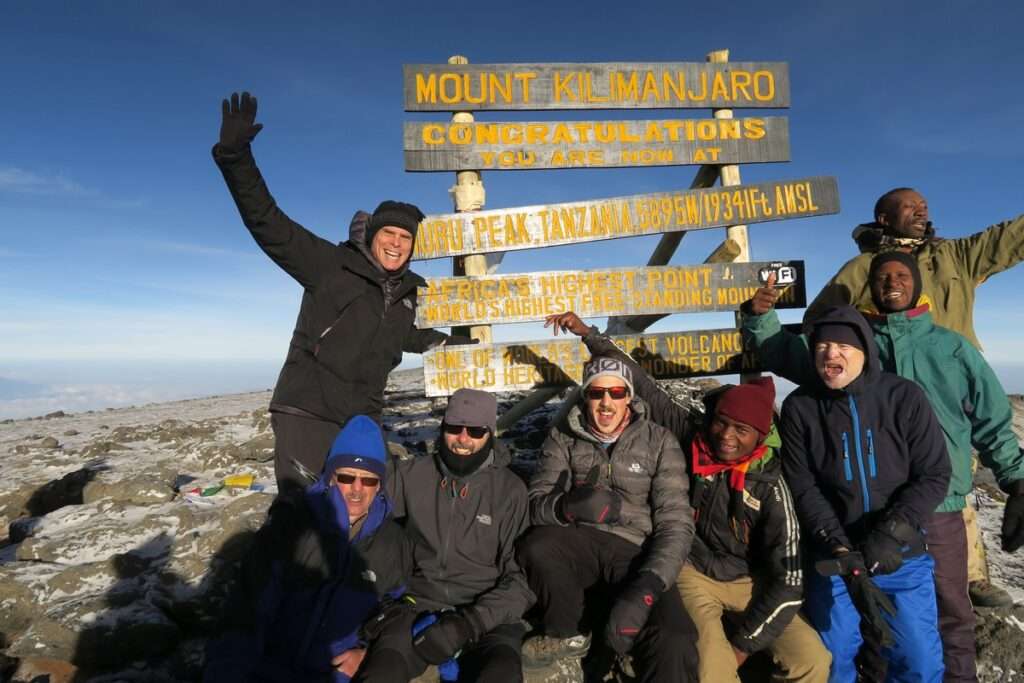
Kibo Hut to Uhuru Peak
Elevation: 15,430 ft to 19,341 ft
Hiking Time: 6-8 hours
Distance: 6 km | 4 miles
Habitat: Arctic
Uhuru Peak to Horombo Hut
Elevation: 19,341 ft to 12,250 ft
Hiking Time: 4-5 hours
Distance: 16 km | 10 miles
Habitat: Health
Throughout the demanding ascent from Kibo Hut to Uhuru Peak and the subsequent descent to Horombo Hut, students undergo a transformative educational experience, encompassing various aspects of high-altitude mountaineering and personal growth. The journey from Kibo Hut to Uhuru Peak involves a substantial elevation gain, exposing students to the physiological challenges associated with extreme altitudes. Guides may lead discussions on the body’s adaptation to reduced oxygen levels and the endurance required for sustained trekking at high elevations.
As the habitat transitions to the Arctic, students observe firsthand the adaptations of flora and fauna to this extreme environment. The scarcity of vegetation and wildlife in the Arctic habitat becomes a lesson in the resilience of life in challenging conditions. The midnight ascent to Uhuru Peak exposes students to the harsh reality of extreme weather conditions, including biting winds and freezing temperatures. Guides can discuss the importance of proper clothing, gear, and the mental fortitude needed to withstand the challenging elements. The physically and mentally demanding summit push underscores the importance of teamwork. Students learn to rely on each other for support, encouragement, and shared determination. Discussions may revolve around effective communication, pacing, and the role of teamwork in achieving collective goals. Upon reaching Uhuru Peak, guides may share the cultural and historical significance of the summit, including its importance to local communities and the broader African context. Students gain a deeper understanding of the symbolic value of Kilimanjaro as an iconic landmark.
The summit day is a pinnacle moment for personal reflection and goal achievement. Students reflect on their individual journeys, challenges overcome, and the mental resilience required to reach the highest point on the continent. These reflections contribute to a sense of personal accomplishment and growth. Discussions about sustainable trekking practices are reinforced during the descent to Horombo Hut. Guides may emphasize the importance of minimizing environmental impact, leaving no trace, and respecting the delicate ecosystems of high-altitude environments.
Arriving at Horombo Hut marks the culmination of the trek. Students celebrate their achievements, fostering a sense of camaraderie and shared accomplishment. Guides may lead discussions on the significance of completing the trek and the lessons learned along the way. In essence, the trek from Kibo Hut to Uhuru Peak and the subsequent descent encapsulates a holistic learning experience, integrating physical challenges, environmental education, cultural insights, and personal development. The students emerge from this transformative journey not only with a sense of achievement but also with a deeper appreciation for nature, resilience, and the power of collective effort.
Day 7: Horombo Hut to Marangu Gate
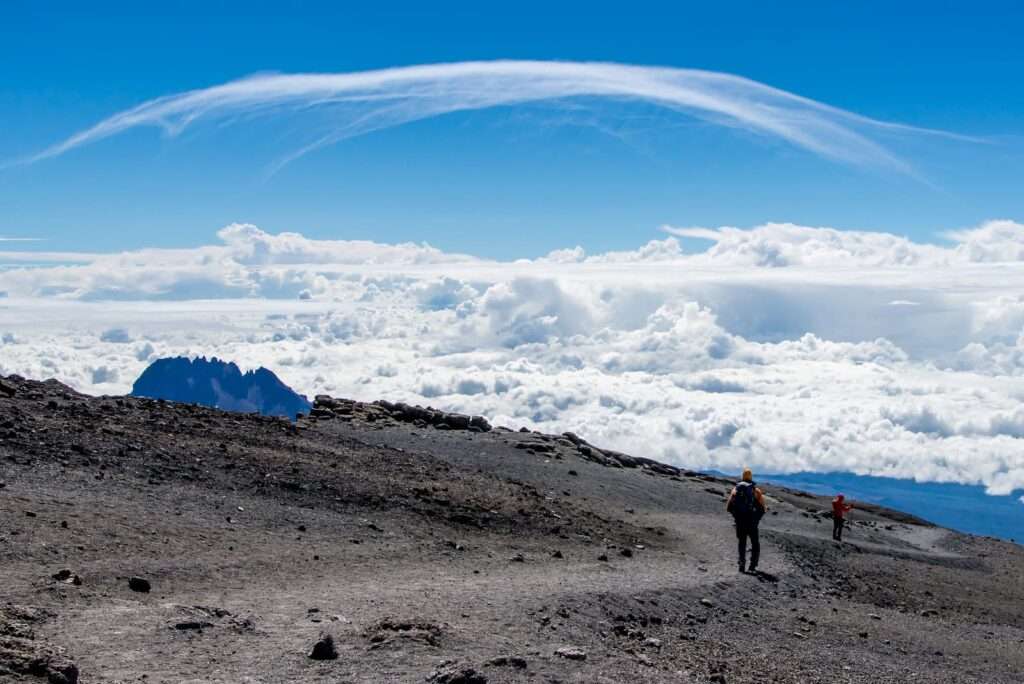

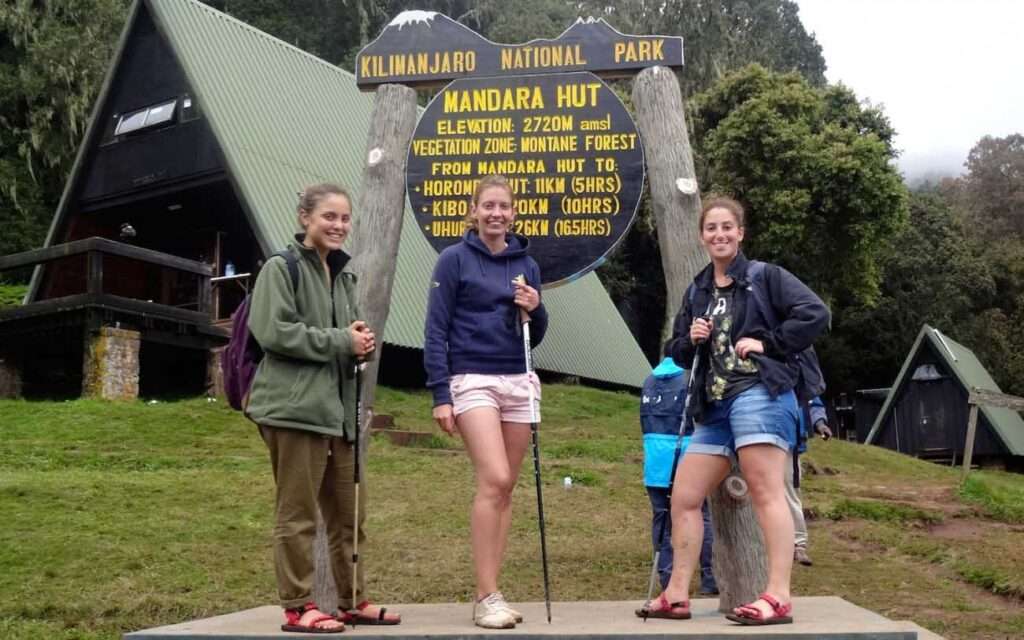
Elevation: 12,205 ft to 6,046 ft
Hiking Time: 5-7 hours
Distance: 20 km | 12 miles
Habitat: Rain Forest
On the final day of the trek, students undergo a unique educational experience as they descend from the elevated terrains of Mount Kilimanjaro to the lower altitudes near Marangu Gate. The descent through the Rain Forest provides students with the opportunity to observe the distinctive flora and fauna of this lush environment. Guides may highlight the unique adaptations of plant and animal life to the rainforest habitat, emphasizing the interconnectedness of ecosystems on Kilimanjaro.
As students move to lower elevations, they witness firsthand the changes in climate, vegetation, and terrain. Guides may discuss how these environmental shifts are linked to altitude, offering insights into the diverse microclimates found on the mountain. The final day becomes a period of reflection for students. They can contemplate the challenges overcome, personal growth experienced, and the sense of achievement derived from reaching Uhuru Peak. Guides may facilitate discussions on the physical and mental aspects of the trek, encouraging students to articulate their thoughts and emotions.
Reaching Marangu Gate holds cultural significance as it marks the end of the trek and the point where summit certificates are awarded. Guides may share local stories or traditions associated with Marangu Gate, providing students with insights into the cultural context of trekking on Kilimanjaro. The descent through the rainforest reinforces discussions on environmental conservation and responsible trekking practices. Guides may engage students in conversations about minimizing impact, respecting nature, and leaving the trail as undisturbed as possible.
Throughout the trek, students have acquired practical skills in trekking, including proper equipment use, pacing, and adjusting to varying trail conditions. The descent day offers a final opportunity to apply and reinforce these skills. Receiving summit certificates at Marangu Gate becomes a celebratory moment, fostering a sense of accomplishment and camaraderie among the trekking party. Guides may facilitate a group reflection on the collective journey, emphasizing the shared experiences that bind the group together.
Guides may broaden the discussion to global perspectives on conservation, addressing broader issues such as climate change and the importance of preserving natural environments. This expands the educational scope, connecting the trekking experience to wider environmental and global challenges. In essence, the final day of the descent serves as a comprehensive conclusion to the educational journey on Kilimanjaro. Students leave not only with memories of a remarkable physical accomplishment but also with a deeper understanding of ecology, environmental conservation, and the cultural significance of Mount Kilimanjaro in the local and global context.
Day 8: Departure Day
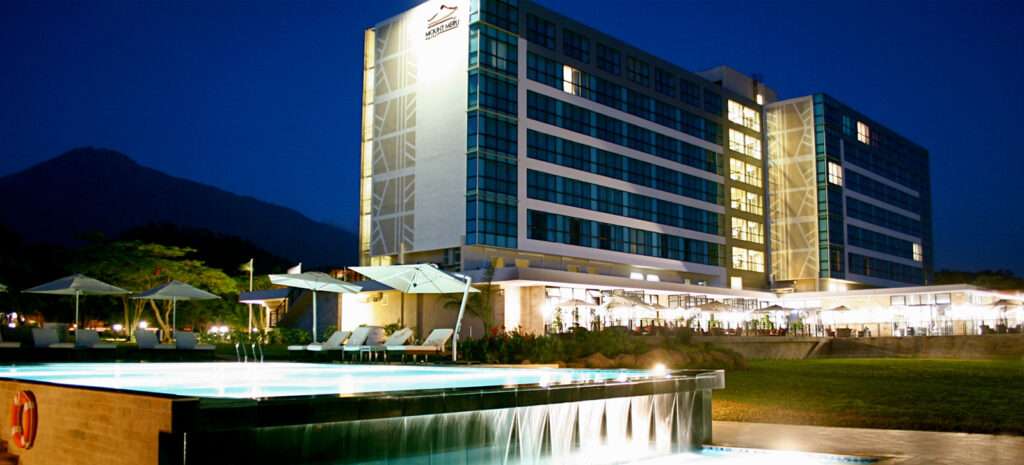
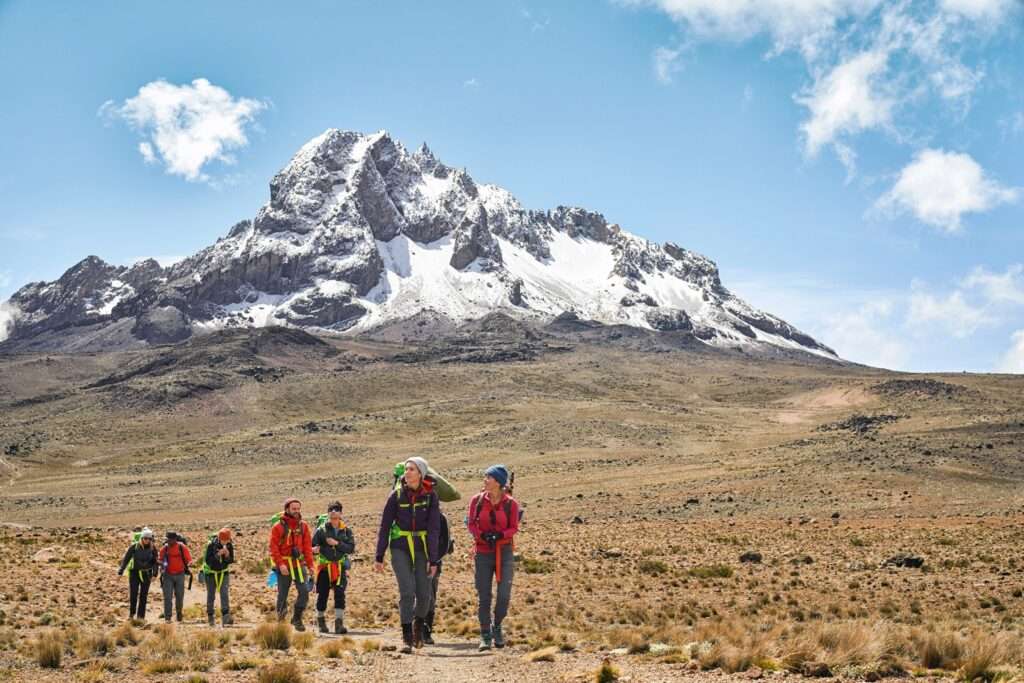
On the tenth and final day, known as Departure Day, participants bid farewell to the awe-inspiring landscapes of Tanzania and the memories forged during their Kilimanjaro climb. This day marks the conclusion of the transformative journey, and as participants prepare to depart, they carry with them a wealth of experiences and newfound perspectives.
The morning typically involves packing, exchanging contact information with newfound friends, and expressing gratitude to the guides and support staff who played an integral role in the success of the
expedition. These farewells become poignant moments, emphasizing the bonds formed during the challenging climb and the collective achievement of reaching the summit.
As participants leave Arusha, they reflect on the personal and collective growth fostered by the Kilimanjaro climb. The experience serves as a metaphor for life’s challenges, reinforcing the resilience, determination, and teamwork needed to overcome obstacles. The lessons learned on the mountain extend into various facets of life, creating a lasting impact on the individuals who embarked on this remarkable journey.
Departure Day is not just the end of an adventure; it’s the beginning of a new chapter for each participant. The memories, lessons, and friendships forged during the Kilimanjaro climb will continue to resonate, shaping their perspectives, fostering a sense of accomplishment, and inspiring future endeavors. As participants board their flights homeward, they carry the spirit of Kilimanjaro with them, forever enriched by the challenges met and the heights attained on Africa’s highest peak.
Book Your Study Tour With Us
Embark on your educational journey with confidence – book your study tour with us and unlock a world of knowledge, experiences, and endless possibilities. Your path to academic enrichment begins here!

Unlock the doors to your next adventure! Book now and enjoy the journey with an exclusive 10% discount. Your story begins with a single click.
Why Book With Us
1. Expert Guidance
2. Curated Learning Experiences.
3. Safety and Security
4. Global Networking Opportunities
5. Cost-Effective Packages
